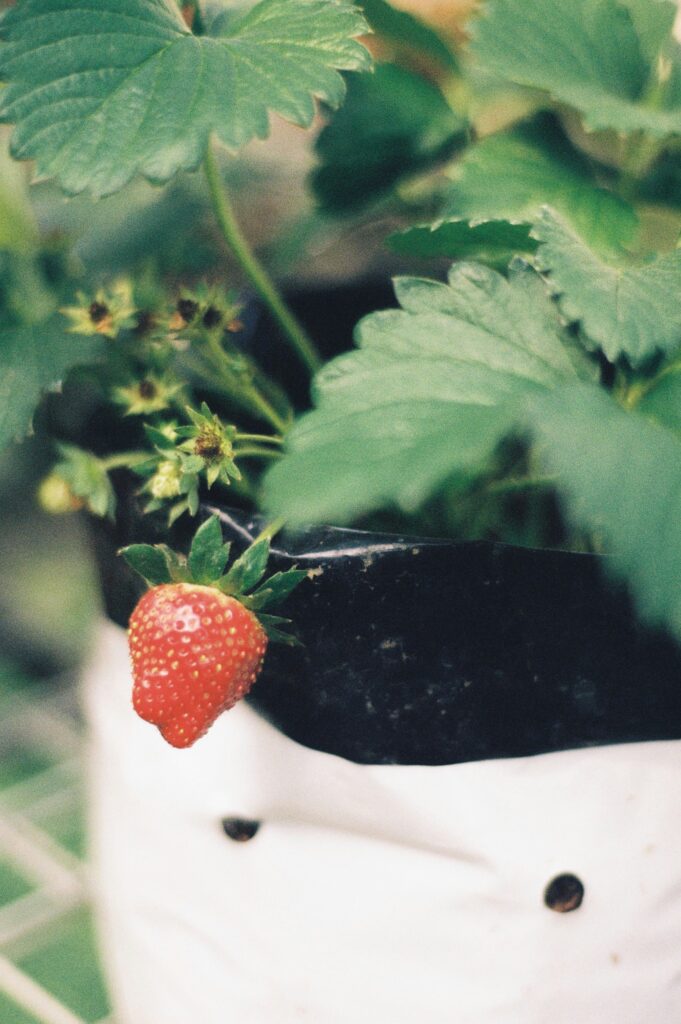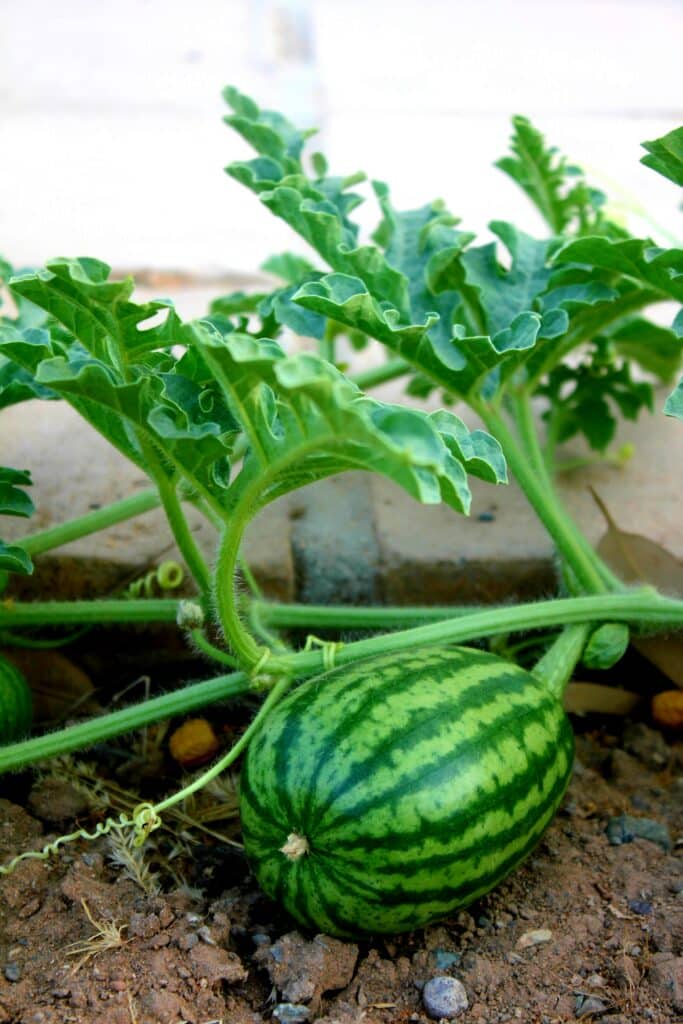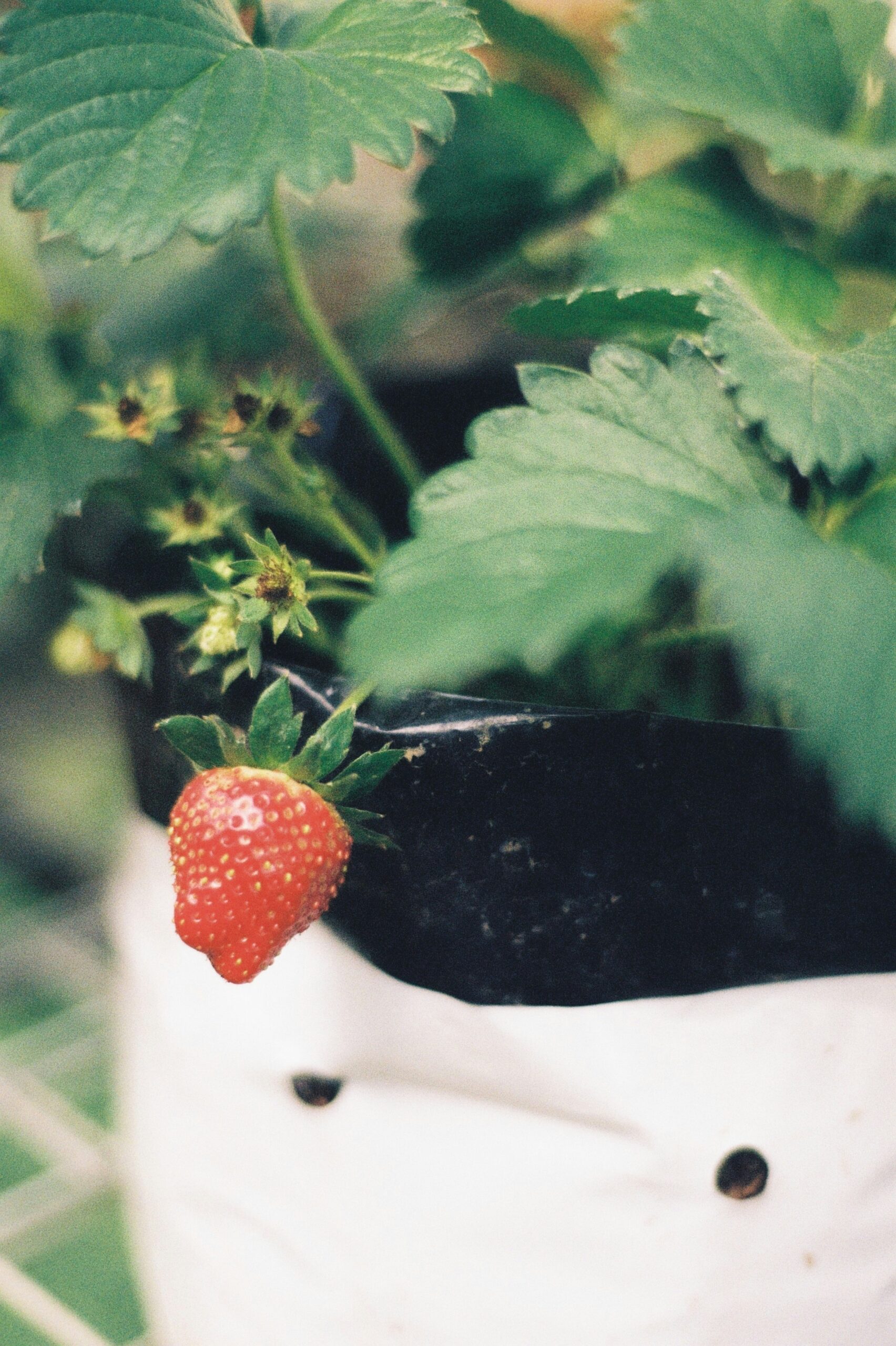Anúncios
Container gardening can turn this dream into reality, even if you have minimal space! The wonders of cultivating your mini green paradise, where you harvest your bounty, are not only delightful but also nourishing and rewarding. We present a comprehensive guide on ‘Harvest Your Own Bounty: Container Gardening Tips for Growing Delicious Edible Plants.’ Get ready to embark on a green journey!

In the age where organic and fresh is the new norm, container gardening is a splendid way to contribute to this movement. It offers the gratification of producing your food, ranging from luscious strawberries to crisp lettuce and aromatic herbs. Our guide will unlock the secrets of mastering this gardening method, enabling you to enjoy the sweet taste of success from your edible garden.
Anúncios
This guide will delve into the most effective strategies to thrive in container gardening, from choosing the right containers and soil mix to the most suitable edible plants. It will also share insights into correct watering techniques, sunlight requirements, and other critical care aspects to keep your edible plants thriving. Moreover, it will provide useful tips for pest management and disease control in container gardening.
Indulge in the pleasure of savoring fresh and tasty edibles right from your container garden. The sense of accomplishment that comes with harvesting homegrown produce is truly incomparable. Stay tuned as we unravel the exciting journey of container gardening, bringing the farm-to-table concept right to your doorstep. Let’s cultivate freshness, health, and deliciousness together!
Anúncios
Understanding Container Gardening
Container gardening, at its core, is the practice of growing plants, including edible ones, in containers instead of planting them in the ground. With a plethora of benefits including flexibility, mobility, and control over soil, light, and water conditions, container gardening is becoming a popular choice among gardening enthusiasts and beginners alike.
While the thought of starting a container garden might seem daunting, especially to those with a technical background, it is a rather straightforward process. All it requires is a clear understanding of certain elements and a structured approach.
Choosing the Right Containers
The first step in setting up a container garden is selecting the appropriate containers. While you may be tempted to choose containers solely based on their aesthetic appeal, there are other important factors to consider, such as material, size, and drainage.
Material is critical as it directly affects the plant’s growth. Plastic containers are lightweight and retain moisture well, but they may deteriorate over time. On the other hand, clay or terracotta pots are durable but require regular watering due to their porous nature.
When it comes to size, a common mistake is choosing containers that are too small. Keep in mind that a larger volume of soil will stay moist longer and provide more room for root growth.
Proper drainage is also crucial to prevent waterlogging, which can lead to root rot. Ensure your container has one or more holes at the bottom for excess water to escape.
Selecting Suitable Plants
Once you’ve chosen the right containers, it’s time to bring your garden to life with plants that thrive in confined spaces. Not all plants adapt well to containers, so selecting varieties that are compact, manageable, and productive is essential for success. Container gardening opens up exciting possibilities for growing everything from herbs and greens to fruiting vegetables and even berries—right on your patio, balcony, or windowsill.
Top Categories for Container-Friendly Plants:
- Herbs
Herbs are among the easiest and most rewarding plants to grow in containers. They require minimal space, offer culinary value, and can even repel pests. Ideal choices include:- Basil
- Parsley
- Mint (note: best grown in its own pot to avoid aggressive spreading)
- Chives
- Cilantro
- Thyme and oregano, which prefer drier conditions and thrive in well-draining pots.
- Leafy Greens
These fast-growing crops are perfect for containers and harvestable within weeks:- Lettuce
- Spinach
- Arugula
- Kale
- Swiss chard
Many greens tolerate cooler temperatures, making them ideal for early spring or fall container gardens.
- Vegetables
With the right container size and support, a surprising number of vegetables flourish in pots:- Tomatoes: Choose compact or determinate varieties like ‘Patio Princess’ or ‘Tiny Tim’.
- Peppers: Both hot and sweet peppers perform well in 12″–14″ containers.
- Radishes: Fast-maturing and perfect for shallow pots.
- Green beans: Especially bush varieties.
- Zucchini and eggplant: If given a large enough container and full sun.
- Root Vegetables
These require deep containers to accommodate their underground growth:- Carrots: Choose shorter varieties like ‘Thumbelina’ or ‘Parisian’.
- Beets
- Turnips
- Onions and garlic (grown from sets or cloves) do well in wide, deep containers.
- Fruits
Small fruits bring sweetness and charm to your container garden:- Strawberries: Particularly productive in hanging baskets or tiered containers.
- Blueberries: Thrive in large pots with acidic soil; choose dwarf or patio varieties.
- Dwarf citrus trees: Like Meyer lemon or calamondin, ideal for sunny balconies with winter protection.
Match Plant Variety with Container Size
Matching the right plant to the appropriate container is key:
- Shallow pots (6–8 inches deep): Ideal for herbs, lettuce, radishes.
- Medium-depth pots (10–12 inches): Great for peppers, bush beans, strawberries.
- Deep pots (12–18+ inches): Necessary for tomatoes, carrots, potatoes, and small fruit trees.
Also, consider planting companion groupings, such as mixing basil with tomatoes or parsley with lettuce, to make the most of space while supporting plant health.
Understanding Sunlight Requirements
Light is one of the most essential ingredients for plant growth, and understanding your plants’ sunlight preferences can make or break your container garden. Since containers are mobile, this gives you a unique advantage—you can move them to optimize exposure throughout the seasons.
General Guidelines for Sun Exposure:
- Full Sun (6+ hours of direct sunlight per day):
Most vegetables and herbs, especially fruiting ones like tomatoes, peppers, and cucumbers, fall into this category. Place them in south- or west-facing areas, such as balconies, decks, or sunny window ledges. - Partial Sun / Partial Shade (3–6 hours of direct sunlight):
Ideal for leafy greens, beets, carrots, and certain herbs like parsley and mint. These plants can tolerate morning sun with afternoon shade or dappled light throughout the day. - Shade-Tolerant Plants (less than 3 hours of direct sun):
While not many edible plants thrive in full shade, some greens like spinach, lettuce, and arugula can still grow decently in bright, indirect light or under artificial lighting setups indoors.
Tips for Managing Light in Container Gardens:
Keep windows clean and prune nearby branches or indoor obstacles that may block sunlight
Rotate plants regularly to ensure even growth and prevent leaning toward one side.
If natural light is insufficient, especially in apartments or during winter, consider using grow lights—LED or fluorescent lights designed to mimic the sun’s spectrum.
Proper Watering and Feeding
Watering and feeding are fundamental aspects of container gardening. As containers can dry out quickly, especially in hot weather, regular watering is essential. However, overwatering can be detrimental, leading to root rot. Hence, it’s about finding the right balance.
The amount of water your plants need will depend on their type, the size of the container, and the weather. A good rule of thumb is to water when the top inch of soil feels dry to the touch.
Feeding is equally important. Container plants can’t source nutrients from the ground, so they rely on what you provide. Use a high-quality potting mix initially, and then supplement with a balanced liquid fertilizer every two weeks or as per the manufacturer’s instructions.
Dealing with Pests and Diseases
Although container gardening offers a more controlled environment than traditional ground planting, container plants are not immune to the challenges of pests and plant diseases. In fact, the warm, often humid conditions of indoor and container gardens can sometimes create ideal environments for certain infestations or fungal problems to flourish if not managed carefully.
The Importance of Vigilance
Early detection is critical when dealing with any pest or disease. Regularly inspecting your plants allows you to catch issues before they escalate. Look for tell-tale signs such as:
- Discolored, curling, or spotted leaves
- Sticky residue (often left behind by aphids or scale)
- Webbing (a sign of spider mites)
- Mushy stems or wilting, even with adequate watering
- Slow growth or sudden decline in vigor
Get into the habit of checking not just the leaves, but also the undersides, stems, and soil surface, where many pests lay eggs or feed unnoticed.
Common Pests in Container Gardens
- Aphids – Tiny green, black, or brown insects that cluster on new growth.
- Spider mites – Microscopic pests that cause speckled leaves and fine webbing.
- Mealybugs – White, cottony pests often found near leaf joints.
- Fungus gnats – Small black flies that breed in damp soil and damage roots.
Effective Natural Remedies
When pests are spotted, act swiftly to prevent them from spreading to nearby plants. In most cases, natural and non-toxic solutions are highly effective:
- Neem Oil: A powerful organic insecticide and fungicide. Dilute according to instructions and spray on affected areas, especially leaf undersides.
- Insecticidal Soap: Ideal for soft-bodied pests like aphids and mealybugs. Apply directly and repeat every few days until the problem subsides.
- Isopropyl Alcohol: Dab mealybugs and scale insects with a cotton swab dipped in rubbing alcohol to kill them on contact.
- Sticky traps: Use yellow sticky traps to capture flying insects like fungus gnats.
For persistent or severe infestations, quarantine the affected plant to protect others and consider introducing beneficial insects (like ladybugs) if gardening indoors with ventilation or in greenhouse conditions.
Handling Plant Diseases
Diseases such as powdery mildew, root rot, blight, and leaf spot can also appear in container gardens, often as a result of poor air circulation or overwatering. To combat diseases:
- Remove affected leaves or stems immediately.
- Sterilize tools between uses to avoid cross-contamination.
- Improve airflow around plants.
- For fungal problems, apply organic fungicides like copper-based sprays or sulfur dust.
- Always remove fallen leaves or plant debris from soil surfaces to prevent the harboring of spores and larvae.
Monitoring and Maintenance
Maintaining a healthy container garden goes beyond just watering and feeding—it requires daily observation, routine upkeep, and an understanding of how your plants behave over time.
Daily and Weekly Monitoring
- Scan for signs of distress: yellowing, drooping, or deformed leaves often indicate an issue.
- Monitor moisture levels: soil that stays wet too long or dries too quickly can both be problematic.
- Watch for pest activity and changes in leaf texture or color.
Regular monitoring helps you stay ahead of potential issues and keeps plants in peak condition.
Routine Maintenance Tasks
- Prune regularly to remove dead or damaged foliage, encourage bushier growth, and increase airflow.
- Deadhead spent blooms to stimulate more flowering in ornamentals.
- Staking or trellising: Use supports for climbing or vining plants like tomatoes, beans, or sweet peas. This prevents sprawling, saves space, and improves exposure to light.
- Repot as needed: Over time, roots outgrow their containers. Repot your plants when they become root-bound or the soil becomes compacted and loses its structure.
- Top off or refresh soil: Periodically replace the top inch of soil with fresh mix to replenish nutrients and prevent compaction.
Consistency is Key
Unlike outdoor gardens that benefit from nature’s cycles, container gardening relies heavily on human care. It’s not a “set-it-and-forget-it” endeavor—it’s an ongoing relationship between you and your plants. Your attention to detail, patience, and consistency are what make the garden thrive.
Reap the Rewards of Your Efforts
Yes, container gardening requires dedication, but the payoff is immense—lush greenery, fragrant herbs, cheerful blooms, and in some cases, a steady supply of home-grown vegetables or fruits. Beyond the tangible, it offers something more: a daily connection to nature, a therapeutic escape, and the joy of nurturing life.
So, inspect, prune, water, and observe. Celebrate the small wins—new leaves, budding flowers, or recovering plants. And remember: a thriving container garden is the result of mindful practice, a touch of science, and a whole lot of love.
Happy gardening! 🌿🌼🍅

Conclusion
In conclusion, “Harvest Your Own Bounty: Container Gardening Tips for Growing Delicious Edible Plants” offers invaluable advice for gardening enthusiasts. The techniques highlighted in the article empower gardeners of all skill levels to cultivate their own fresh, flavorful, and healthy produce, even in limited spaces.
Whether you’re a seasoned green thumb or just starting your gardening journey, the tips on container gardening can help you reap a bounty of edible plants. By carefully choosing the right containers, picking suitable plants, and diligently providing the appropriate care, you can create a thriving green oasis right at home.
Moreover, the article emphasizes the importance of regular watering, proper sunlight exposure, and timely fertilization, which are all crucial elements to successful container gardening. It also highlights the joy and satisfaction that comes from growing and harvesting your own food, reminding us of our inherent connection to nature.
In essence, container gardening not only helps you grow your own food, but also fosters sustainability, and promotes physical and mental wellness. As we move forward, let’s continue to explore and share this wonderful world of container gardening. Happy planting! 🌱🍅🥕

